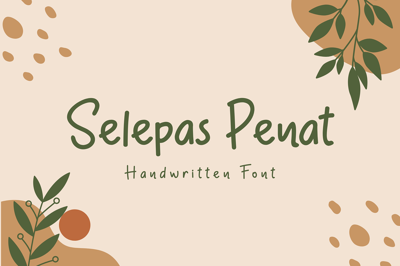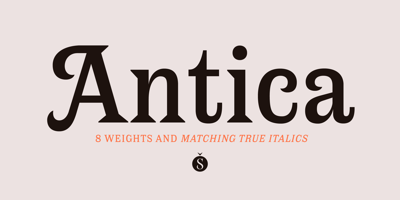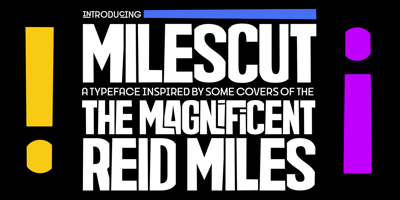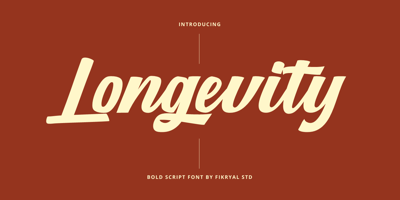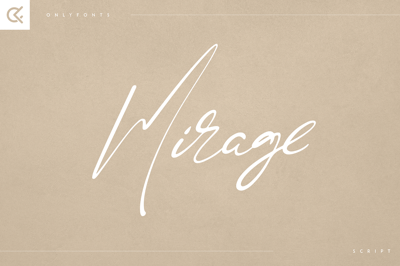From Script to Sans: Exploring Font Families That Tell Stories
From Script to Sans: Exploring Font Families That Tell Stories
Every font carries within its curves and angles a story of human creativity, cultural evolution, and technological advancement. From the elegant flourishes of Renaissance scripts to the clean efficiency of modern sans-serifs, typography chronicles our collective journey through history, reflecting societal values, artistic movements, and technological possibilities. Understanding these typographic narratives transforms font selection from mere aesthetic choice into purposeful storytelling that enriches design meaning and connects with audiences on deeper emotional levels.
The Historical Tapestry of Typography
Typography evolution mirrors human civilization's progression, with each era producing fonts that capture the spirit, technology, and aesthetic values of their time. These historical connections provide fonts with narrative power that extends far beyond their immediate visual impact.
Medieval Manuscripts and Gothic Origins: The story of Western typography begins in medieval scriptoriums where monks painstakingly hand-lettered religious texts. Gothic fonts like Blackletter preserve this heritage, carrying associations with tradition, authority, and spiritual significance that make them powerful for brands seeking historical gravitas.
These early letterforms tell stories of dedication, craftsmanship, and religious devotion that resonate with audiences seeking authentic, time-tested values. Modern brands use Gothic elements sparingly but effectively to evoke heritage and traditional craftsmanship.
Renaissance Humanism and Serif Elegance: The Renaissance brought typography revolution through movable type and humanist letterforms that celebrated classical Roman inscriptions. Fonts like Trajan and Optima carry stories of intellectual awakening, artistic achievement, and cultural sophistication.
Renaissance-inspired fonts communicate refinement, education, and cultural appreciation that appeals to audiences valuing intellectual sophistication and artistic heritage. These typefaces work exceptionally well for museums, educational institutions, and luxury brands with cultural positioning.
Industrial Revolution and Functional Design: The Industrial Revolution demanded typography that matched mechanical precision and mass production capabilities. Sans-serif fonts emerged as symbols of modernity, efficiency, and democratic accessibility, telling stories of progress and social transformation.
Early sans-serif fonts like Akzidenz-Grotesk carry narratives of industrial innovation and social democratization that continue resonating with contemporary audiences seeking straightforward, honest communication without pretentious ornamentation.
Cultural Stories Embedded in Font DNA
Different cultures developed distinct typographic traditions that embed cultural values, aesthetic preferences, and communication styles directly into letterform DNA. Understanding these cultural narratives helps designers choose fonts that resonate authentically with diverse audiences.
Germanic Precision and Bauhaus Philosophy: German typography tradition emphasizes functional clarity and systematic design approaches that reflect cultural values of precision, efficiency, and rational thinking. Fonts influenced by Bauhaus principles tell stories of modernist design philosophy and engineering excellence.
Futura exemplifies this Germanic design philosophy, communicating forward-thinking precision that appeals to audiences appreciating systematic approaches and technological innovation. The font's geometric construction tells stories of mathematical harmony and design rationality.
Italian Renaissance and Artistic Heritage: Italian typography heritage emphasizes elegance, proportion, and artistic sophistication that reflects the country's central role in Renaissance art and design. Fonts like Bembo and Sabon carry narratives of artistic mastery and cultural refinement.
These fonts communicate stories of artistic heritage and creative excellence that resonate with brands seeking to associate with cultural sophistication and creative mastery.
American Pragmatism and Democratic Access: American typography development focused on practical functionality and democratic accessibility, creating fonts that prioritized readability and mass communication over exclusive elegance. This tradition produces fonts that tell stories of practical innovation and inclusive communication.
Franklin Gothic and other American gothic fonts communicate pragmatic efficiency and accessible communication that appeals to audiences valuing straightforward, unpretentious messaging.
Swiss International Style: Swiss typography revolutionized modern design through systematic approaches that prioritized clarity, objectivity, and universal communication. Helvetica becomes the ultimate expression of Swiss design philosophy, telling stories of rational design and global accessibility.
The Swiss approach to typography communicates neutrality, reliability, and international sophistication that makes it appropriate for global brands seeking universal appeal without cultural conflicts.
Personal Stories: Fonts as Emotional Connectors
Beyond historical and cultural narratives, fonts carry personal stories that trigger individual memories, emotions, and associations. Understanding these psychological connections helps designers choose fonts that create meaningful personal relationships with audiences.
Childhood and Educational Memories: Certain fonts trigger powerful childhood associations through their use in educational materials, children's books, and family communications. Comic Sans, despite professional criticism, tells stories of childhood creativity and informal learning that can be appropriate for specific contexts.
Script fonts often evoke memories of handwritten letters and personal communications, creating emotional connections that suggest intimacy and personal attention. These associations make script fonts powerful for brands emphasizing personal relationships and individual care.
Professional and Academic Associations: Fonts used extensively in professional and academic contexts carry associations with competence, authority, and intellectual rigor. Times New Roman tells stories of academic achievement and professional credibility through its widespread use in formal documents.
Understanding these professional associations helps brands leverage font credibility while avoiding inappropriate usage that might undermine intended messaging.
Contemporary Digital Stories: Modern fonts developed for digital applications tell stories of technological advancement and contemporary communication. Fonts like Inter and Roboto carry narratives of user-centered design and technological optimization.
These contemporary fonts communicate innovation and digital fluency that appeals to audiences seeking cutting-edge solutions and modern experiences.
Regional Font Families and Their Narratives
Different geographic regions developed distinctive typographic characteristics that reflect local aesthetic preferences, cultural values, and historical influences. These regional stories provide fonts with geographic authenticity that can enhance brand positioning.
European Typographic Sophistication: European typography tradition emphasizes refined elegance and historical continuity that reflects the continent's rich cultural heritage. Fonts developed in European contexts often carry stories of cultural sophistication and artistic refinement.
Garamond tells stories of French elegance and printing innovation, while Caslon reflects British typographic tradition and colonial influence. These historical connections provide fonts with cultural authenticity that resonates with audiences appreciating heritage and tradition.
American Innovation and Accessibility: American typography development focused on practical innovation and democratic accessibility, creating fonts that tell stories of entrepreneurial spirit and inclusive communication. These fonts appeal to audiences valuing practical innovation over exclusive refinement.
Asian Minimalism and Harmony: Asian design philosophy influences typography through emphasis on harmony, balance, and spatial relationships that reflect cultural values of meditation and aesthetic refinement. Fonts influenced by Asian design principles tell stories of contemplative beauty and balanced composition.
The Evolution of Sans-Serif Stories
Sans-serif typography evolution tells fascinating stories of social change, technological advancement, and design philosophy development. Understanding these narratives helps designers appreciate why different sans-serif fonts carry distinct emotional and cultural associations.
Early Sans-Serif Revolution: The first sans-serif fonts challenged typographic conventions by removing decorative elements in favor of functional clarity. These revolutionary fonts told stories of democratic communication and social progress that threatened established hierarchies.
Mid-Century Modern Optimism: Post-war sans-serif development reflected optimism about technological progress and social advancement. Fonts like Helvetica tell stories of international cooperation and rational design that appealed to audiences seeking systematic solutions and global understanding.
Contemporary Digital Evolution: Modern sans-serif fonts developed for digital applications tell stories of user experience optimization and technological sophistication. These fonts carry narratives of human-centered design and technological empathy that resonate with contemporary audiences.
Many free font collections now offer sans-serif options that carry these contemporary narratives while providing professional quality and extensive technical optimization for digital applications.
Script Fonts and Their Romantic Narratives
Script fonts carry some of typography's most emotional stories, evoking memories of handwritten communication and personal expression that create powerful emotional connections with audiences.
Formal Script Elegance: Traditional formal scripts tell stories of ceremonial importance and social refinement through their association with wedding invitations, formal announcements, and luxury communications. These fonts communicate exclusivity and special occasion significance.
Casual Script Warmth: Informal brush scripts tell stories of personal creativity and approachable communication that suggest handmade quality and individual attention. These fonts work effectively for brands emphasizing personal relationships and artisanal quality.
Contemporary Script Innovation: Modern script fonts blend traditional elegance with contemporary design sensibilities, telling stories that bridge historical sophistication with modern accessibility. These fonts appeal to audiences seeking authentic expression without outdated formality.
Display Fonts and Their Dramatic Stories
Display fonts exist specifically to tell bold stories that capture attention and communicate distinctive brand personalities. Understanding the narratives embedded in different display font styles helps designers choose options that support intended messaging.
Art Deco Glamour: Art Deco fonts tell stories of 1920s optimism, technological fascination, and geometric beauty that continue appealing to audiences seeking glamorous sophistication and vintage luxury.
Retro-Futuristic Narratives: Fonts inspired by mid-century futurism tell stories of optimistic technological advancement and space-age innovation that resonate with contemporary audiences experiencing nostalgia for positive future visions.
Contemporary Edge: Modern display fonts tell stories of cutting-edge design and cultural rebellion that appeal to audiences seeking distinctive expression and creative differentiation from mainstream communication.
Building Narrative-Driven Font Libraries
Creating font libraries based on narrative understanding rather than purely aesthetic preferences provides more strategic typography resources that support meaningful design communication.
Organizing by Story Themes: Consider organizing free font collections by narrative themes rather than technical categories, creating groupings like "Heritage and Tradition," "Innovation and Progress," "Personal and Intimate," and "Bold and Rebellious."
This narrative organization helps identify appropriate fonts for specific communication objectives while building understanding of how different fonts support storytelling goals.
Cultural Sensitivity in Font Selection: Understanding font narratives includes recognizing when certain stories might be inappropriate or insensitive for specific audiences or applications. Cultural awareness prevents unintentional messaging conflicts that could damage brand relationships.
Testing Narrative Effectiveness: Validate font narrative assumptions through audience testing that reveals whether intended stories actually resonate with target demographics. Sometimes fonts carry different stories for different audiences based on cultural background and personal experience.
The Future of Typographic Storytelling
Typography continues evolving as new technologies and cultural changes create opportunities for innovative storytelling through letterform design and application.
Variable Font Narratives: Variable font technology enables dynamic storytelling where fonts adapt and change to support evolving narratives within single applications. This technological capability opens new possibilities for responsive storytelling through typography.
AI and Personalized Font Stories: Artificial intelligence may eventually enable personalized font experiences where typography adapts to individual user preferences and cultural backgrounds, creating customized narrative experiences that resonate more deeply with specific audiences.
Cultural Fusion and Global Stories: Increasing global connectivity creates opportunities for fonts that tell stories of cultural fusion and international cooperation, reflecting contemporary multicultural experiences and global communication needs.
Practical Application of Font Storytelling
Understanding font narratives transforms typography selection from aesthetic choice into strategic communication tool that supports brand storytelling and audience connection.
Brand Story Alignment: Choose fonts whose embedded narratives align with intended brand stories and communication objectives. Fonts that tell conflicting stories undermine brand consistency and message clarity.
Audience Story Resonance: Consider which font narratives resonate most strongly with target audiences based on cultural background, generational characteristics, and personal values. Effective font stories create emotional connections that enhance brand relationships.
Media-Specific Storytelling: Different media and applications may require fonts that tell appropriate stories for specific contexts. Social media might benefit from contemporary, accessible narratives while formal documents require traditional authority stories.
Conclusion: Typography as Narrative Art
Font families represent far more than technical tools for text display—they are vessels carrying centuries of human stories, cultural values, and creative expression. Understanding these narratives transforms typography from mechanical process into meaningful communication that connects with audiences on emotional and cultural levels.
Whether working with premium fonts or carefully selected free font alternatives, the stories embedded within letterforms provide powerful resources for meaningful design communication. The most effective typography choices leverage these narratives to support brand storytelling and create authentic connections with intended audiences.
Start examining your font choices through the lens of storytelling rather than purely aesthetic evaluation. Consider what stories your typography tells about your brand, values, and relationship with your audience. This narrative perspective will elevate your design work from visual decoration to meaningful communication that resonates with deeper human experiences.
The stories within fonts await your discovery and application. Every typeface in your library carries narrative potential that can enhance your design's emotional impact and cultural authenticity. Embrace typography's storytelling power and watch your designs develop deeper meaning and stronger audience connections.
